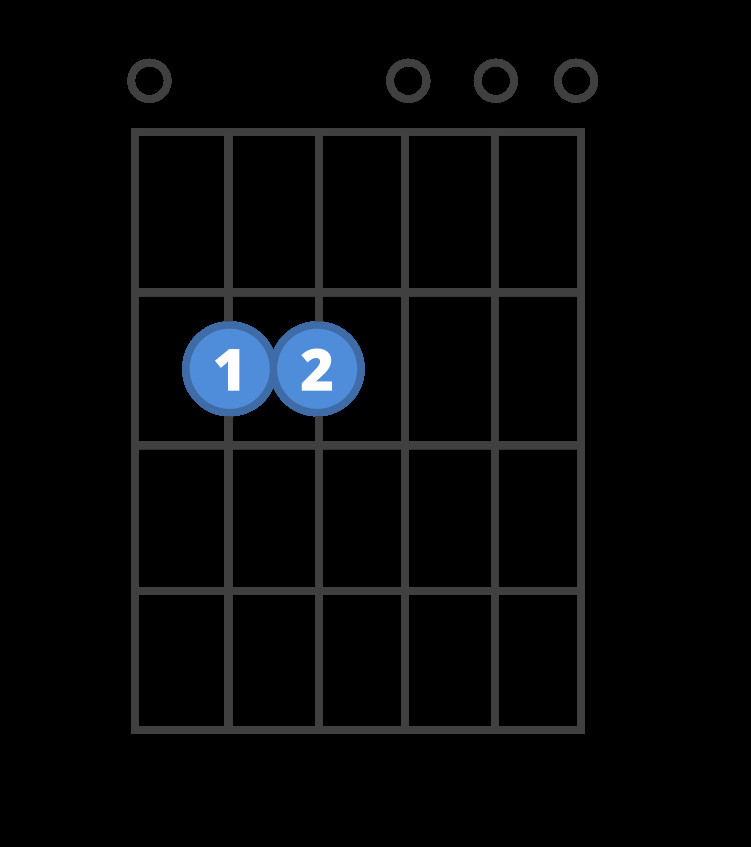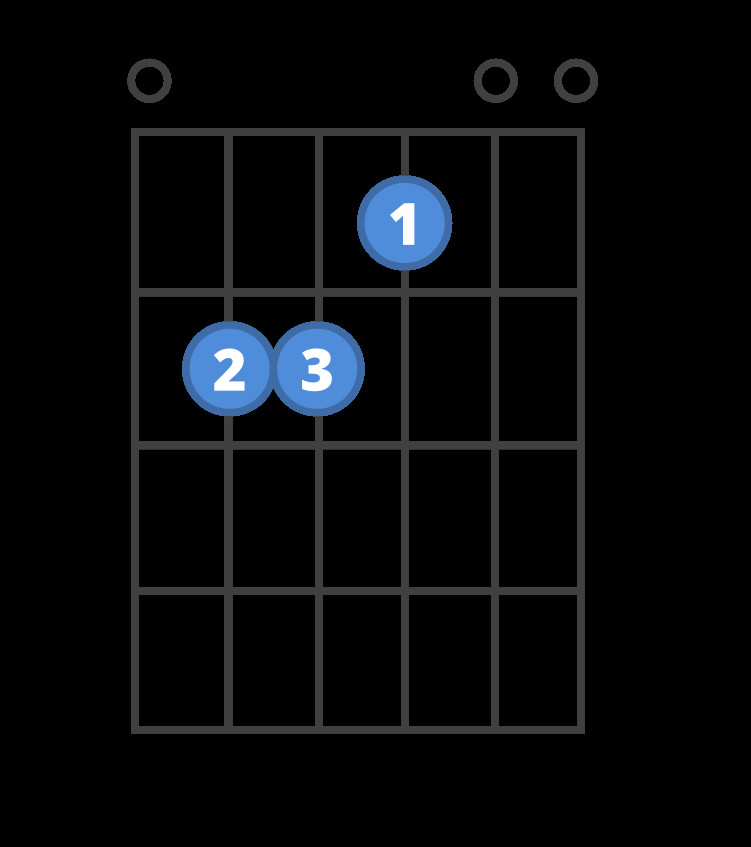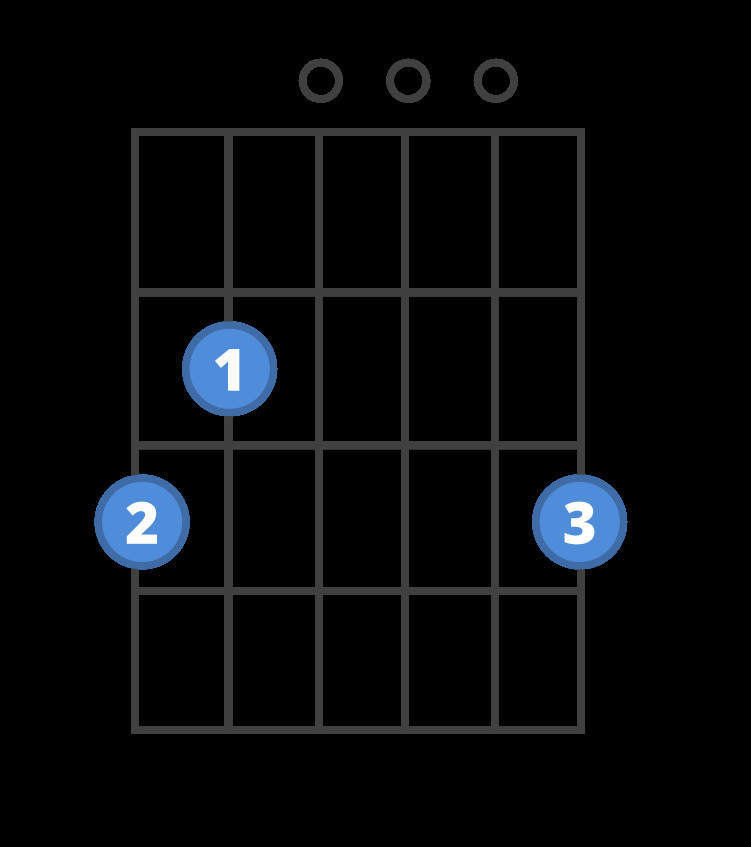The E minor chord (often written as Em) is a foundational chord for guitarists of all levels. It’s known for its slightly melancholic yet versatile sound, making it a staple in countless songs across genres. Fortunately for beginners, the Em chord is also remarkably easy to learn, requiring just two fingers to play. This guide will walk you through exactly how to play the E minor chord, offer effective practice tips, and show you how to use it in your guitar playing journey.
How to Play the E Minor Chord: A Simple Two-Finger Shape
Getting your fingers in the right position is the first step to playing a clean and clear Em chord. Here’s a simple breakdown:
- Locate the Second Fret: Find the second fret on your guitar neck. This is the metal bar two frets away from the headstock.
- Finger Placement – Finger 2: Place your middle finger (the 2nd finger) on the 5th string (A string) at the 2nd fret. Make sure your fingertip is just behind the fret, and you’re pressing down firmly enough to get a clear sound.
- Finger Placement – Finger 3: Place your ring finger (the 3rd finger) on the 4th string (D string) at the 2nd fret. Again, ensure it’s just behind the fret and applying firm pressure.
- Strum All Six Strings: Once your fingers are in place, strum all six strings of your guitar. You should hear a rich, full E minor chord.
 Chord diagram for the Em guitar chord.
Chord diagram for the Em guitar chord.
Many beginners wonder if they can use their first and second fingers instead. While technically possible, using your second and third fingers for the Em chord offers a significant advantage. It keeps your first finger free, which makes transitioning to other common chords like C major, A minor, or D major much smoother and faster. This efficient finger positioning will become increasingly helpful as you learn more songs and chord progressions.
E Minor vs. E Major: Understanding the Difference
If you’re already familiar with the E major chord, you’re very close to mastering E minor! The shapes are almost identical, with just a subtle but crucial difference that changes the chord’s character from major to minor.
Let’s compare the diagrams:
E Minor (Em)
 Chord diagram for the Em guitar chord.
Chord diagram for the Em guitar chord.
E Major (E)
 Chord diagram for the E guitar chord.
Chord diagram for the E guitar chord.
The key difference lies in the 3rd string (G string). In the E major chord, the first finger presses down on the 3rd string at the 1st fret, raising the note to a G#. In the E minor chord, this finger is lifted, allowing the 3rd string to ring open as a G. This seemingly small change – lowering the G# to a G – creates the minor interval that defines the E minor chord’s sound. In musical terms, we say the third of the chord is flattened, creating a minor third interval instead of a major third. This is the fundamental difference between major and minor chords.
Practice Techniques to Solidify Your Em Chord
Consistent practice is key to making the Em chord feel natural and sound great. Here’s a highly effective practice drill:
The On-Off Drill:
- Form the Em Chord: Place your fingers in the correct position for the E minor chord.
- Strum and Count: Strum the chord four times, counting to four (1, 2, 3, 4) with each strum.
- Release and Rest: Lift your fingers completely off the strings for four counts (1, 2, 3, 4).
- Repeat: Immediately place your fingers back into the Em chord shape and repeat the strumming and releasing cycle.
This “on-off” drill is fantastic for muscle memory. The act of repeatedly forming and releasing the chord shape helps your fingers learn the required positions. The four-beat counts provide you with structured time to accurately place your fingers.
Once you’re comfortable with the on-off drill, challenge yourself by switching between Em and another chord. Good choices for beginners include the G chord, C chord, and D chord. Try a sequence like Em – G – Em – C – Em – D – Em, spending four counts on each chord. Smooth transitions between chords are essential for playing songs, so practicing chord changes early on is very beneficial.
 Chord diagram for the G guitar chord.
Chord diagram for the G guitar chord.
Incorporating Em into Your Guitar Playing
The E minor chord is incredibly versatile and appears in countless songs. It often pairs beautifully with chords like G major, C major, D major, and A minor. Experiment with these common chord progressions to start making music:
- Em – C – G – D: A very popular and uplifting progression.
- Am – Em – C – G: A classic minor key progression with a slightly more melancholic feel.
- Em – D – C – G: Another common and pleasing sequence.
Practice transitioning smoothly between these chords. You can find many play-along tracks online that use these progressions to further develop your timing and chord changes.
Explore Further and Expand Your Chord Vocabulary
Mastering the E minor chord is a significant step in your guitar journey. From here, you can explore many other easy minor chords like A minor and D minor to expand your musical palette. Don’t hesitate to delve into resources like ChordBank’s extensive chord library and beginner lessons to continue your progress and unlock even more musical possibilities on the guitar. Happy playing!

